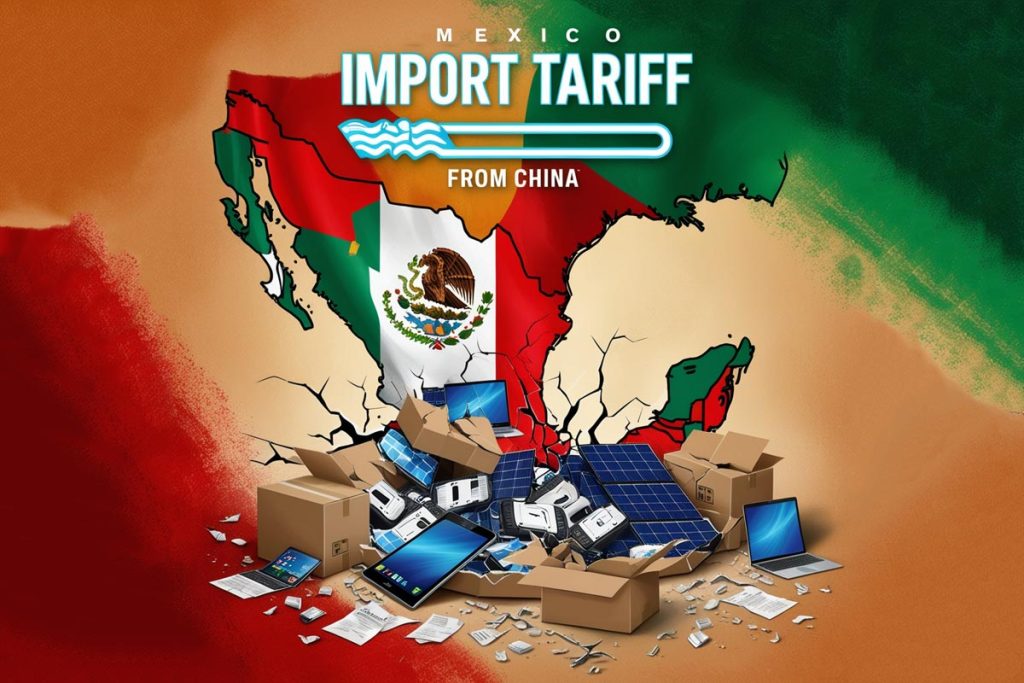Mexico and China share a dynamic trade relationship, with goods flowing between the two nations daily. For Mexican businesses importing from China, understanding tariffs is crucial. Import tariffs directly affect product costs, profit margins, and compliance with customs regulations.
This guide explains Mexico’s import tariffs on goods from China. It simplifies complex details and offers actionable insights for businesses navigating cross-border trade.

Import tariffs are taxes charged by a country on goods brought across its borders. They serve two purposes: generating revenue for the government and protecting local industries from foreign competition.
For businesses, tariffs add to the cost of imported goods. These costs often impact pricing, profitability, and overall market competitiveness. Importers must factor in tariffs when calculating their total landed cost—the final price of goods after all fees, taxes, and logistics expenses.
Mexico uses a standardized tariff system based on the Harmonized System (HS) Code, a global classification system for goods. Each product has an HS code, which determines its tariff rate.
The general tariff rate varies depending on the product type. For example, industrial machinery may have lower tariffs than luxury goods. In addition to tariffs, Mexico imposes a value-added tax (VAT) on most imports, currently set at 16%. Importers also face customs processing fees and, in some cases, anti-dumping duties.
It’s important to note that China is not part of the United States-Mexico-Canada Agreement (USMCA). This means goods imported from China don’t benefit from preferential tariff rates that apply to member countries. Instead, imports from China follow Mexico’s standard tariff schedule.
By understanding these tariff structures, businesses can better plan and manage their costs, ensuring smoother trade operations.
China is one of Mexico’s top trading partners, supplying a wide range of goods across industries. In 2023, trade between the two nations reached record levels, with electronics, machinery, textiles, and automotive parts dominating imports.
Mexican businesses rely heavily on Chinese manufacturers for cost-effective products. Chinese goods often serve as inputs for Mexico’s manufacturing sector, particularly in industries like automotive and electronics. This interdependence fuels strong trade growth despite tariff challenges.
However, this reliance also means that changes in tariffs, shipping costs, or regulations can significantly impact Mexican importers. Staying informed about trade trends is critical for businesses to remain competitive.
Import tariffs on goods from China depend on several factors:
By understanding these factors, businesses can avoid surprises and accurately estimate costs. Proper planning ensures smoother customs clearance and cost management.
Calculating tariffs involves a straightforward process. Here’s a step-by-step guide:
Example:
A shipment of electronics valued at $10,000 with a 10% tariff would look like this:
Accurate calculations like this help businesses set budgets and pricing strategies effectively. For added accuracy, consider using online tariff calculators or consulting logistics experts.
Import tariffs are a significant cost, but businesses can adopt strategies to minimize their impact:
By implementing these strategies, businesses can improve efficiency and reduce financial strain.
Importing from China to Mexico involves complex processes, and mistakes can be costly. Here are common errors and ways to avoid them:
Avoiding these mistakes ensures smoother import operations and protects your bottom line.
Trade between Mexico and China is expected to grow as demand for Chinese products increases. Several trends may influence this relationship:
Understanding these trends can help businesses plan long-term strategies for importing from China.
Shipping from China to Mexico doesn’t have to be a headache or a budget buster. Understanding tariffs and staying compliant is key to protecting your bottom line. But why take on the burden alone?
At 218 Freight, we don’t just move your goods—we solve your logistics challenges. Our team ensures your shipments clear customs smoothly, meet all requirements, and arrive on time. With our expertise, you’ll save money, avoid delays, and stay focused on growing your business.
Don’t let tariffs and logistics slow you down. Contact 218 Freight now and let us handle the hard part, so you can focus on what matters—delivering value to your customers.